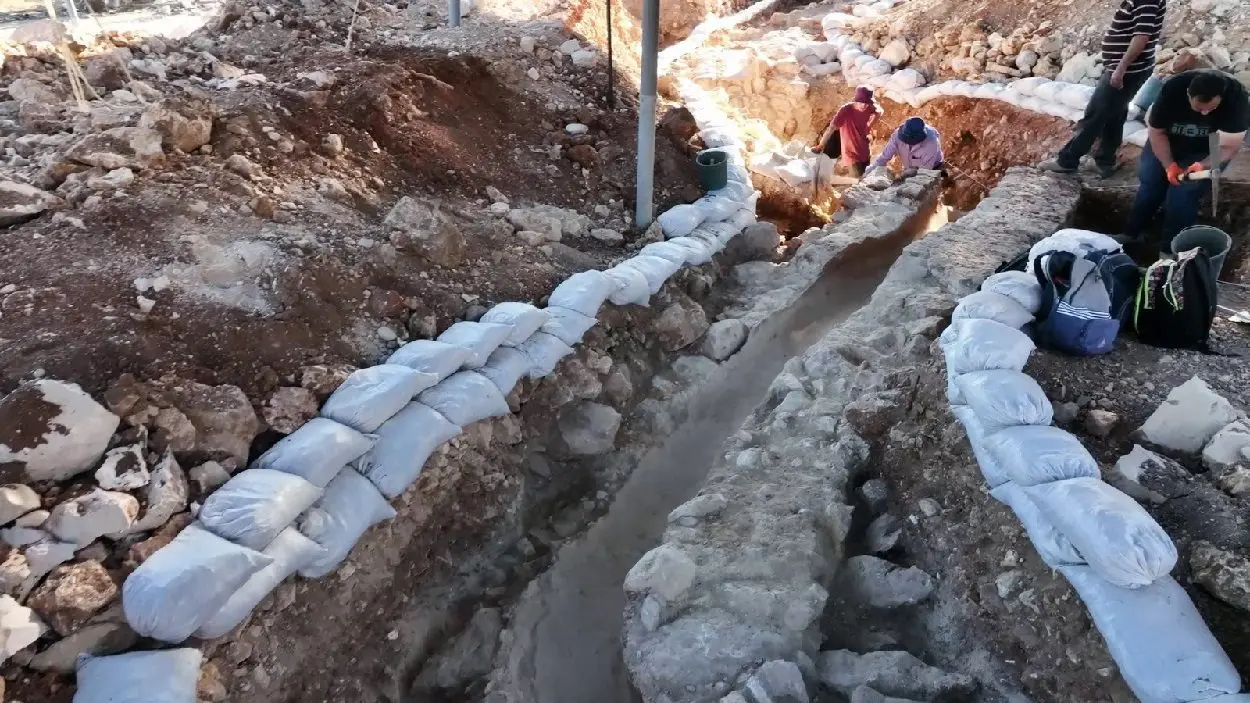Archaeologists from the Israel Antiquities Authority have discovered a large section of the upper aqueduct that transported water to the city of Jerusalem, Israel.
The discovery was made during archaeological works in preparation for housing development in the Giv‘at Hamatos neighbourhood.
Excavations revealed a 300-metre-long section that was built by King Herod some 2000-years-ago. During Herod’s reign, the city population saw a large period of growth, meaning that the water flowing in springs and stored in the cisterns was no longer sufficient to support the city inhabitants.
“Due to this situation, the Hasmoneans and King Herod built two complex aqueducts to transport water to Jerusalem, constituting one of the grandest and most sophisticated water projects in the country, and indeed, the ancient world,” said Dr. Ofer Sion from the IAA.

According to the researchers, the aqueducts transported water to Jerusalem from springs in the Bethlehem region using the principle of hydraulic laws (the siphon principle of communicating vessels based on the force of gravity).
Following the destruction of Jerusalem in AD 70, the Roman 10th Legion continued to maintain the aqueduct to support the Roman colony of Aelia Capitolina (Jerusalem).
The route of the Upper Aqueduct followed a convenient and gentle topographical course. So far, three distinct parts have been identified: the lower two parts dating from the Late Second Temple period, and the upper part dating from the days of the Roman Legion stationed in the upper city.
Excavations also revealed 25 coins in the aqueduct foundations distributed at early distances that were likely deposited as offerings for good fortune.
“The exposure of this section of the Upper Aqueduct and the discovery of the 25 coins may enable– possibly for the first time—an absolute dating of the different stages of the construction of Jerusalem’s water aqueducts. It may shed light on the question of who built the first aqueduct—whether it was the Hasmoneans, or King Herod,” said an IAA representative.
Header Image Credit : Emil Eljam

